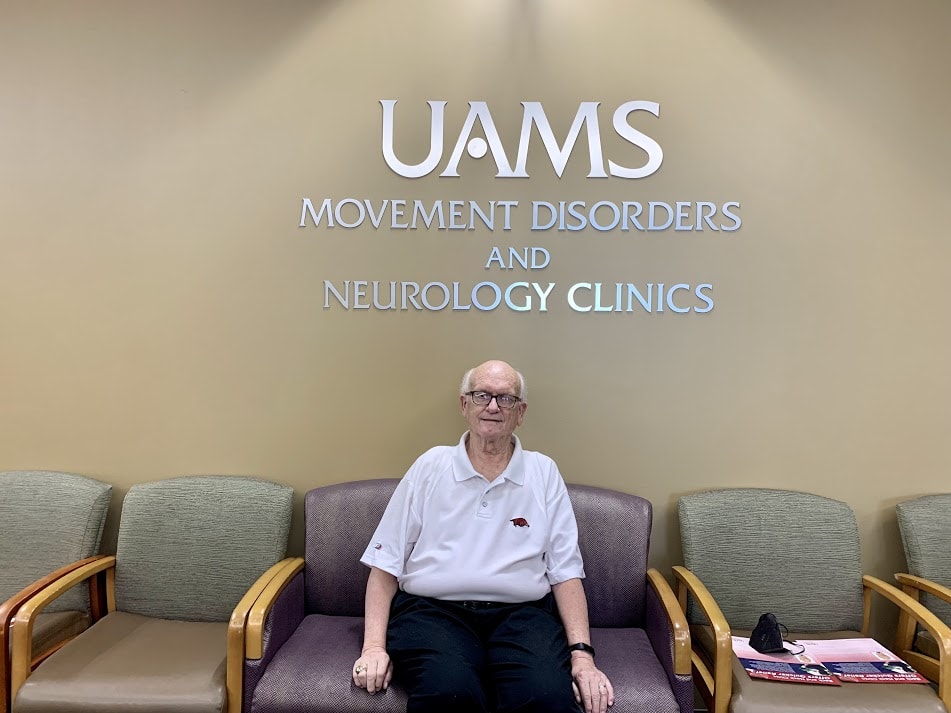View Larger Image

Herb Lair at UAMS
Implant Offers UAMS Patient Relief from Painful Diabetic Neuropathy
| Herb Lair got an upgrade to his quality of life after having a device implanted in his spinal cord at UAMS.
Lair, 78, suffered from painful diabetic neuropathy (PDN) for about two years until he had the procedure in June 2022.
Even after major back surgery and different treatment therapies, Lair had trouble walking long distances due to his lack of balance, tingling, numbness, and pain in his feet.
The World Health Organization estimates that 422 million adults have diabetes worldwide. Diabetic peripheral neuropathy is a common complication that presents as pain, numbness, burning, or tingling. About 20% of patients with diabetes will develop PDN, a progressive, potentially debilitating chronic neuropathic condition.
The new treatment option was developed last year when the FDA approved a medical device designed to relieve back pain by stimulating the spinal cord.
The approval followed a clinical trial led by Erika Petersen, M.D., professor of neurosurgery at UAMS.
The study found that high-frequency (10kHz) spinal cord stimulation provided significant benefits for painful diabetic neuropathy (PDN) patients who suffered for years with symptoms that are resistant to other treatments.
The study, which involved 216 patients at 18 centers across the United States, found the treatment could provide pain reduction of 50% or more for patients over 12 months. The trial began in 2017 and followed patients for 24 months.
“The study results show that 10kHz spinal cord stimulation provides large, clinically meaningful reductions in pain as well as large improvements in sleep and quality of life,” Petersen said. “Clinically, the implications are substantial as doctors now have a new treatment option to offer their patients, and one that can provide real benefits to patients’ lives.”
Jarna Shah, M.D., an assistant professor in the Department of Anesthesiology, said the device doesn’t cure neuropathy, but it can mask the pain caused by the condition in some people.
After agreeing to the treatment, Lair then went through a trial phase to determine if the device would help ease his neuropathy. Shah placed the electrode leads into the epidural space of his spine using needles and taped the device to his back.
If a patient feels more than 70% relief during the trial phase, which lasts five to seven days, physicians will move on to the second phase of the procedure and implant the device and battery.
Lair saw a marked improvement in his discomfort during the first phase and opted to have the device implanted.
Lair feels like his life has improved since the procedure. Now, he feels much more comfortable going about his regular life with no pain. He has gotten back to regularly attending church, going to eat, and doing activities with friends.
“I can walk on a treadmill now for 20 minutes with no issues,” Lair said.
He even hopes to get back to boxing class soon and continues to work as a business consultant.